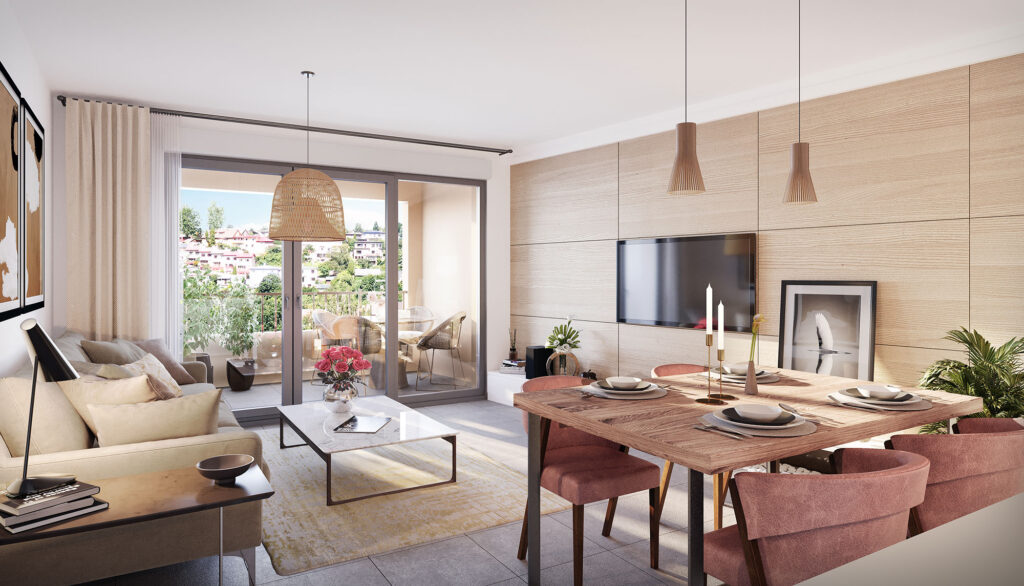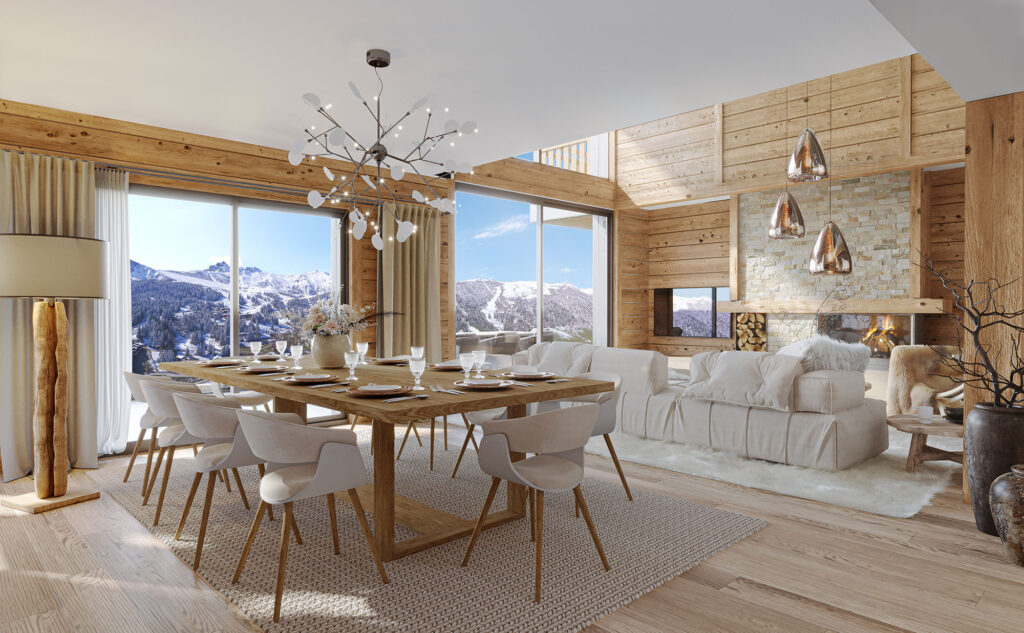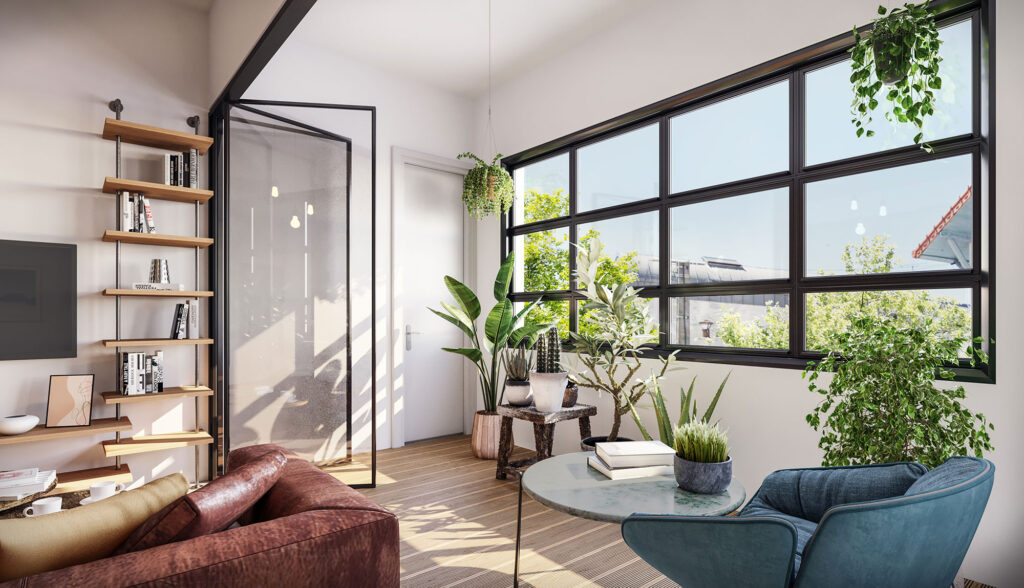Interior design projects can become a real headache, especially for those with no experience in the field. Yet today, more than ever, technology is at the service of real estate, offering more ways tobeautify homes.
It's now possible to simulate interior design by creating a 3D plan. If you're planning to furnish your house or apartment, this article is for you.
Interior design simulation with a 3D plan: the main steps
The complexity of designing a 3D plan of a building's interior generally depends on the owner's or client's expectations.
Step one: 3D modeling
3D modeling is carried out using dedicated software. At present, there are several interior design software packages to choose from, such as my3Dplanner.
3D modeling mainly consists of designing the stageand building the framework of the project. During this stage, you can also reconfigure the floor plan of your home.
For beginners, it's best to draw a 2D sketch of walls, partitions, doors, windows and staircases before visualizing everything in 3D mode.
Step 2: Decorating the 3D rendering
This stage is crucial in terms of interior design simulation. It involves choosing and arranging the elements that make up each room: furniture, bathroom fittings, decorations, etc.
The placement of furniture, the choice of fittings and the selection of decorative objects are all decisive factors in the success of interior design projects.
Most software packages offer pre-established templates, but these can always be customized to suit individual tastes.
Final stage: Adding textures and validation
In the final stage of designing your 3D plan, you can choose the materials, colors and textures that inspire you. It's possible to make the simulation as realistic as possible, depending on the designer's level of expertise and the sophistication of the tool used.
Once all these steps have been completed, you can view the complete floor plan. It details the various arrangements of rooms, furniture and other fittings. Move on to the final adjustments and add your personal touch.
Tips for optimizing your 3D interior design plan

Whether your interior design project concerns you personally or is being carried out on behalf of your customers, these few tips will help ensure its success.
Clearly define your needs
Doubts and a lack of clarity on the part of homeowners as to what they want their interiors to look like are sometimes the downfall of interior design projects.
It's important that you have a clear idea of the changes you're planning, at least on the basics such as the layout of the space, the surface area of each room, wall colors and so on.
Thinking about the daily habits of the inhabitants is a pragmatic way of defining the details of your interior design. If you call on the services of a professional, all you need to do is explain to him or her the reasons that motivated you to design your interior.
This will make it easier for a professional to work and then present his or her proposals.
Think about the exact function of each space
Defining the function of each corner of your home allows you toassign the characteristic to be given to each space. Considering a second function for a room is a fundamental mistake that often leads to clutter.
If, for example, you have a room designed as an office, stick to it and avoid installing storage furniture or a sofa bed.
Entrust 3D design to a specialized studio
While it's more economical to design your own interior using free 3D software, it's safer to use a specialized studio. In fact, only a professional can comply with an architect's specifications or plans.
Specialized studios put seasoned professionals such as 3D graphic designers at your service. They can produce an appropriate simulation, taking specific details into account. For example, they can simulate how your interior will look under different lighting conditions (natural light or lamp light), or with different materials.
In addition to the A to Z of the 3D plan, it is possible to achieve a particularly high degree of detail with digitization. Photogrammetry enables computer graphics designers to scan existing elements before working on them in software.
It is therefore possible, for example, to create with real furniture in a digital environment, without having to switch from 2D to 3D. This undeniably optimizes 3D rendering and saves considerable time.
Why is a 3D plan the best way to design a successful interior?

Many people believe that a simple photo is all it takes to plan a successful interior design project. However, the challenges facing the real estate sector today unquestionably require the use of more sophisticated technology.
There are many reasons why a 3D plan is an essential part of any interior design project.
A tool for realistic visualization of your future interior
A 3D plan gives you a realistic view of your future home. It gives you a precise idea of the volume of each room, the height of the ceiling, the dimensions of doors and windows, and so on.
Similarly, photorealistic images immerse you in the overall ambience of your soon-to-be-renovated home.
All these breathtaking details arouse emotions. If you're a property developer, this will make it easier for you to convince customers to sign. It will also enable you to sell properties that are not yet built, or that still require further development, at an early stage.
A creative and innovative solution
Interior design simulation using a 3D plan can be an effective way of optimizing your project. It's a flexible technique that allows you to customize your interior design freely and simply.
It gives you much greater freedom than working with 2D images or simple photos. As long as you respect the coherence and harmony between the various elements of your home, you can give free rein to your imagination.
With a 3D plan, you are guided towards sophisticated finishes in line with the latest trends.
A way to optimize the profitability of your interior design project
With the benefit of hindsight, it's easy to see that the cost of designing a 3D plan is minimal compared to the added value it brings to your property.
In the short term, simulating your interior layout with a 3D plan enables you to better communicate your expectations to all those involved in the layout project: engineers, interior architects, home designers, etc. It also saves you a considerable amount of time. It also saves you a great deal of time.
In the long term, it reduces the risk of errors, and therefore the number of modifications you'll need to make in the future. So, if you ever get the idea of selling your property, you'll be better off because your property will meet the expectations of even the most demanding buyers.
Need help designing your 3D interior plan?
Please contact us.








